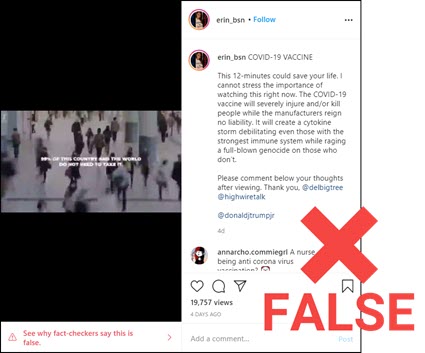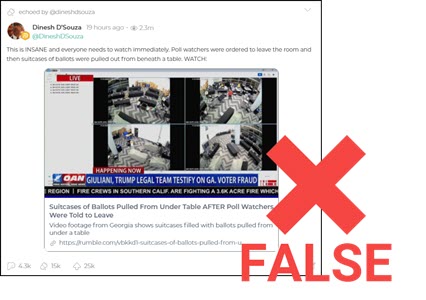GSAN: Disinformation immunity | Misinterpreted election videos | Black media map
|
|
|
Learn about news literacy this week |
|
Disinformation immunity As countries around the world await the mass distribution of two promising vaccines for COVID-19, researchers and fact-checkers are warning that a surge of disinformation could threaten their acceptance and the efforts to immunize a larger percentage of the population.
While medical experts cannot be sure yet about the exact percentage of people who need to take the vaccine to successfully stop the spread of the coronavirus, Dr. Anthony Fauci, the top infectious disease expert in the United States, recently said that the “overwhelming majority” of Americans need to be vaccinated to achieve widespread immunity. About 60% of Americans say they would definitely (29%) or probably (31%) get a vaccine for the coronavirus, according to a Dec. 3 Pew Research Center survey. But 21% say they do not intend to get vaccinated and are “‘pretty certain’ more information will not change their mind,” the survey found.
|
|
Viral rumor rundown  NO: The COVID-19 vaccines from Pfizer and Moderna, which have completed their third and final trial phase, will not severely injure or kill people who take them. YES: A variety of short-lived mild or moderate reactions to both vaccines — including soreness at the injection site, headaches, fatigue, muscle aches and joint pain — have been documented during trial testing. YES: The development of COVID-19 vaccines is overseen by independent data and safety monitoring boards that can stop or pause the trials over safety concerns. YES: Trials for two vaccines — from AstraZeneca and Johnson & Johnson — were halted this fall after one participant in each experienced an adverse reaction. YES: Both trials resumed in late October.  NO: The video in this post on the social media website Parler does not show suitcases of fraudulent ballots being pulled out from under a table. YES: The video shows standard ballot containers at the vote-counting center in State Farm Arena in Atlanta. NO: Election observers were not ordered to leave the room before these votes were processed or moved. YES: The ballots had previously been processed with election observers present for the Republican Party and President Donald Trump’s campaign. NO: This video is not evidence of voter fraud.  NO: President-elect Joe Biden did not forget which foot he hurt and wear a protective walking boot on both his left and right foot on different days. YES: The photo on the left in this Facebook post has been doctored to add a walking boot and a mask. YES: The original of the photo on the left was taken in November 2018 when the Bidens adopted their dog, Major, from the Delaware Humane Association:  As the fact-check from Lead Stories (linked above) points out, this photo was posted to the Delaware Humane Association’s Facebook page more than two years ago. |
|
★ NewsLit Picks Featured “Mapping Black Media” (The Craig Newmark Graduate School of Journalism at the City University of New York). Quick Picks “In 2020, Disinformation Broke The US” (Jane Lytvynenko, BuzzFeed News). |
|
Thanks for reading! Your weekly issue of Get Smart About News is created by Peter Adams (@PeterD_Adams), Suzannah Gonzales and Hannah Covington (@HannahCov) of the News Literacy Project. It is edited by NLP’s Mary Kane (@marykkane). |
|

